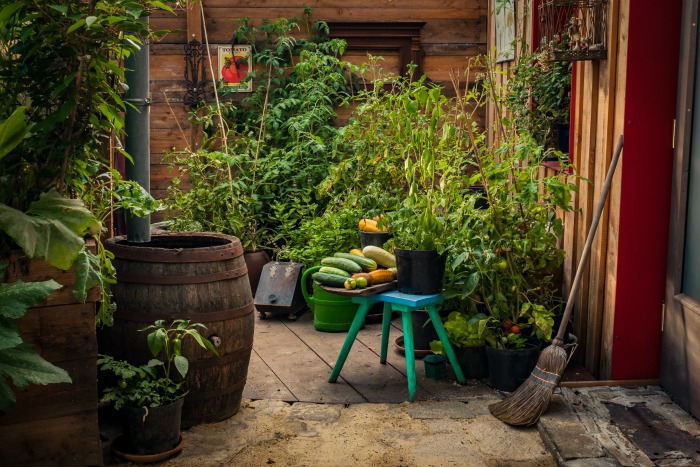How To Grow Vegetables Year-Round In Container Gardens
For many of us, our jobs dictate that we live near a city and, as a result, our yards are smaller and may not provide adequate space for a large garden. As well, those that are renting homes may also be limited to what they can do with a yard. For a short time, I lived in the sprawling outskirts of Houston, TX where my yard was not very big. I had to get creative in terms of where to grow my plants. I started dabbling in container gardening and got pretty good at it.
I utilized my lack of space with a patio garden where I had herbs, vegetables, and berries growing. As well, I had pots of fruit trees started and vertical gardening systems hanging so I could make use of as much space and lighting as possible.
When we don’t have the option of moving out into the sprawling countryside to live off of the land, we have to make use of what we have. Urban and suburbanites can garden in their small spaces using some of the most popular vertical gardening and small space gardening techniques:
- Vertical gardening systems
- Window boxes
- Grow bags
- Ceramic containers
- Pallets
- Hanging planters
Container Plants Prefer Lots of Drainage
Ensure that your pots and containers have adequate drainage holes at the bottom. Plants do not like to sit in soggy soil and will quickly develop root rot, as a result. Plant shallow-rooted plants such as small herbs, green leafy vegetables, strawberries, and green onions which can be grown close to one another and will help plant roots stay shaded from the hot sun. This is a principle of xeriscaping and will also help to cut down on watering.
To keep plants healthy, water only when the soil feels dry. The best way to determine when to water is to insert your index finger 2-3 inches into the soil. If the soil feels dry, it needs water. If it is still moist, then it can go another day until it needs to be watered.
Free – 15-in-1 Survival Kit (Ad)
Because the plants will not be getting essential nutrients from the ground, you need to ensure that the soil you use is suitable for containers. Ensure your potting mix has everything the plant needs to thrive – perlite, vermiculite, calcined clay (kitty litter), and sand are the mineral aggregates most commonly used in potting soils. Adding these would be beneficial to the success of your garden. As well, adding 1/2 cup of dolomitic limestone, greensand, rock phosphate, and kelp powder will give your plants additional nutrients for growing.
What Kind of Plants to Grow?
Growing compact plants with smaller root systems is another way to garden in small spaces. Herbs such as oregano, rosemary, thyme, lavender, and sage grow well in containers and do not need to be replaced each season, thus making them wonderful additions to a year-round patio garden.
Make a concerted effort to purchase heirloom quality seeds. These types of seeds are bred for their flavor and not their durability for shipping and mass distribution. Additionally, these seed types will produce fertile seeds that can be saved for subsequent growing seasons, which many sustainable-minded folks prefer.
The Compact Garden Blueprint (Ad)
The following is a list of seasonal plants that grow well in containers:
Fall/Winter
Utilizing cold frames can help protect smaller, less established plants during bouts of freezing weather.
- Greens such as lettuce, spinach, mustard greens, kale
- Cabbage
- Broccoli
- Carrots
- Turnips
- Onions
- Garlic
- Radishes
- Potatoes
- Most herbs
Spring/Summer
- Tomatoes (requires staking)
- Peppers
- Cucumbers (requires a trellis)
- Green beans
- Fruit trees
- Berries
FREE American Natural Superfood Sample (Ad)
As well, consider adding some colorful flowers such as petunias, marigolds, or roses to attract beneficial insects to help pollinate your patio garden.
As one wise man once said, “There are never problems, only solutions.” Even though you may not live on acreage, you can still enjoy organic, homegrown vegetables and fruits from the convenience of your patio. This small investment will help your family save money at the grocery store, eat healthily, and have lovely scenery to enjoy during the summer months.
This information has been made available by Ready Nutrition


No comments:
Post a Comment